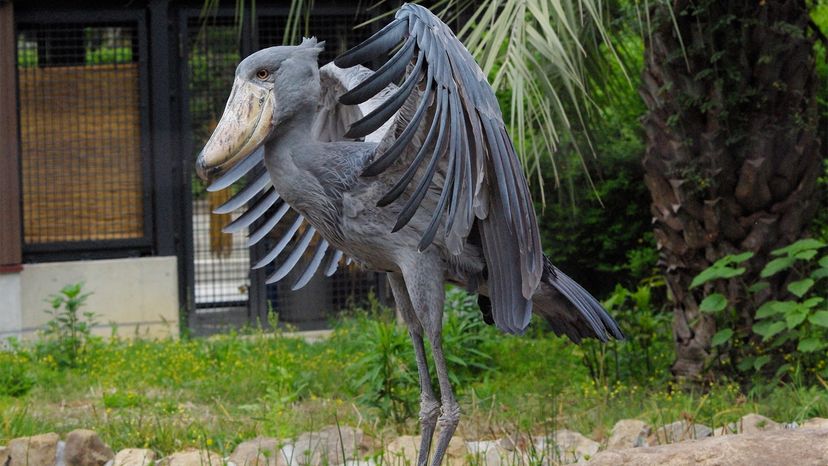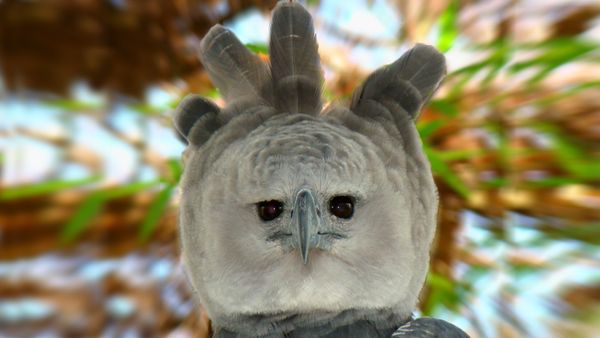These increasingly rare birds (there are estimated to be only about 3,300 to 5,300 specimens of Balaeniceps rex left in the wild) don't spend too much time airborne. Shoebills will fly (a mere 150 flaps per minute) anywhere from 500 to 1,000 feet (152 to 305 meters) at a time, with most flights in the 65-foot (19.8-meter) range.
This is another reason why habitat loss is such an issue: With a need for a wide territory, and the rarity of more than one chick surviving to adulthood, they face an uphill battle to survive in today's rapidly changing climate.
Fierce in the wild, the dauntless shoebill has been known to fight Nile crocodiles (one of the largest crocodiles out there) — to get to their delicious babies, and to fraternize with hippos whenever possible, as the sheer enormity of hippos forces yummy shoebill snacks to the water's surface.
And now for the punchline: This crocodile-decapitating, machine gun-impersonating, feathered Goliath is also a leg defecator. Yep, they poop on their own legs. Liquid stool keeps the shoebill cool.
Anybody got a problem with that?

